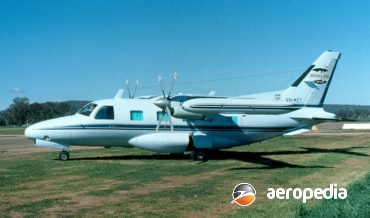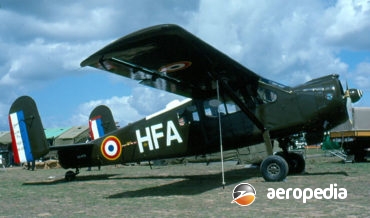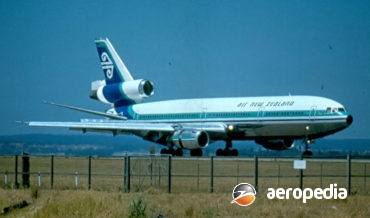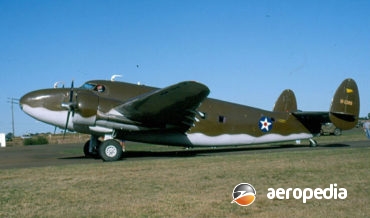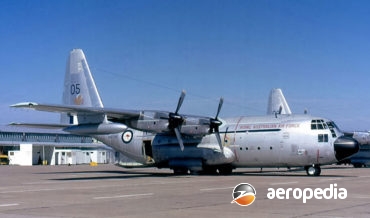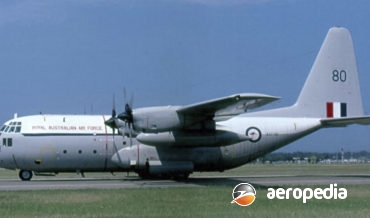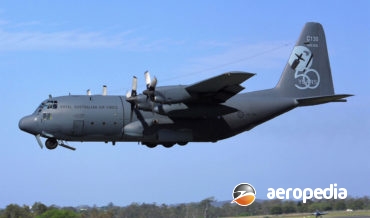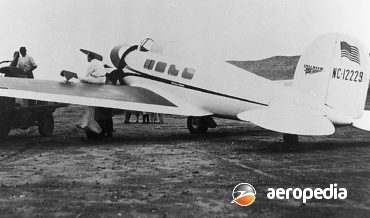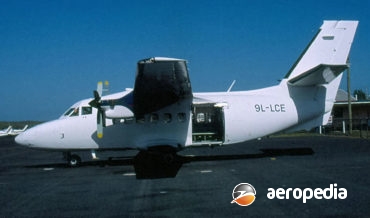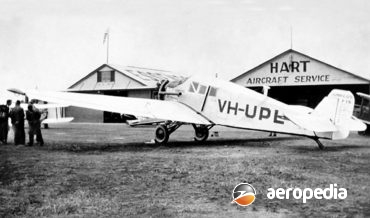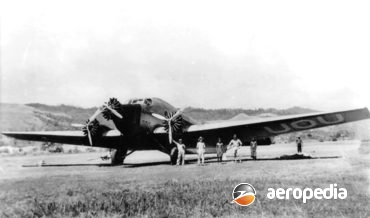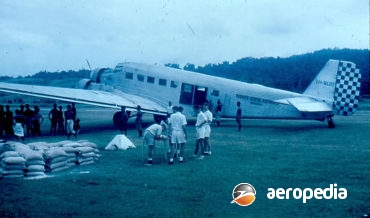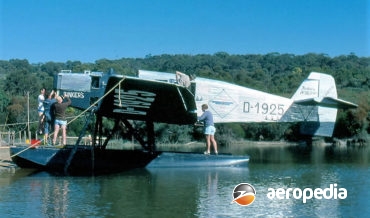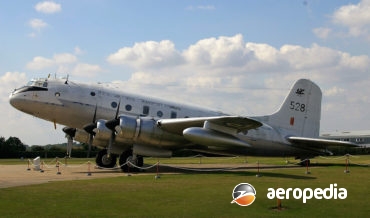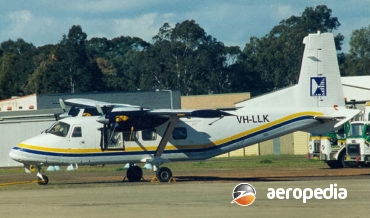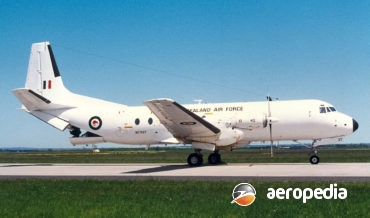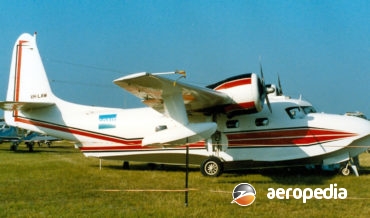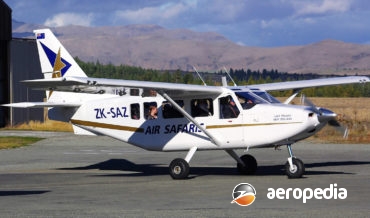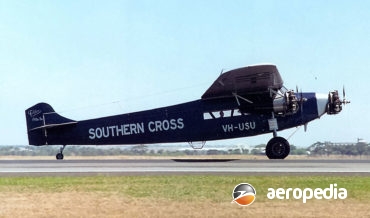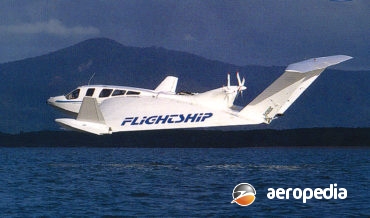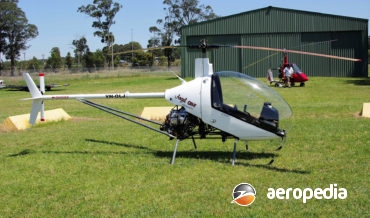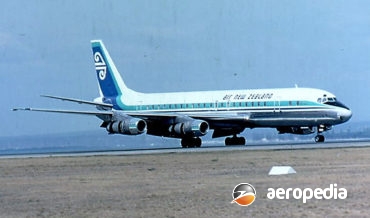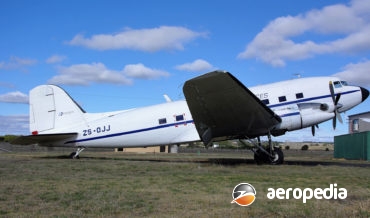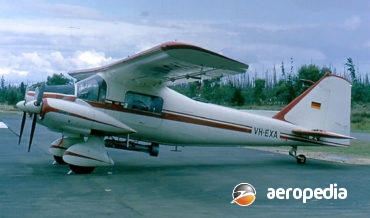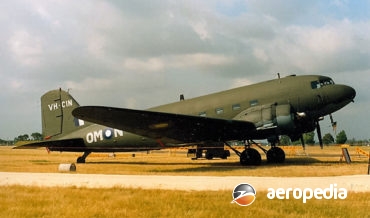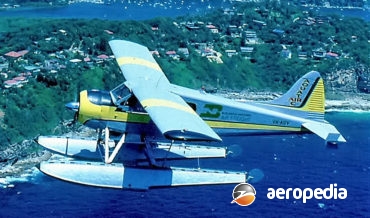All Contents
Contents
The first design of the famous Mitsubishi company to enter production (in notable quantity) after the completion of hostilities in World War II, the MU-2 was designed as a general-purpose light transport which could be used by military operators, as a small airliner, for cargo, or as an executive transport.
David C. Eyre
- May 8, 2019
During World War II George Miles designed a light transport for military use, seeing a need for a light transport that could operate into short unprepared strips, particularly in theatres of war such as in Burma.
David C. Eyre
- May 8, 2019
The MH.1521 Broussard is a light utility transport seating six designed and built by Avions Max Holste at Rheims, the prototype being flown for the first time on 17 November 1952.
David C. Eyre
- May 8, 2019
The Douglas DC-10 series, or McDonnell Douglas DC-10 as it became known following the amalgamation of McDonnell with the Douglas Aircraft Company, was designed to meet a requirement of the US domestic airlines in 1966 for a large capacity medium-range aircraft.
David C. Eyre
- May 8, 2019
The Lockheed Model 18 Lodestar, a development of the Model 14 Super Electra transport, was manufactured in a variety of models with a variety of engines, depending on customer requirements.
David C. Eyre
- May 8, 2019
The most successful large military transport in the Western inventory, and with more than 2,000 examples built in a variety of versions, the Hercules continues in production in the C-130J variant.
David C. Eyre
- May 8, 2019
Development of the Hercules has continued over the years. After the C-130A was the C-130B, which differed from the C-130A in having up-rated T56-A-7 engines and four-blade Hamilton Standard propellers in place of the three-blade Aeroproducts units.
David C. Eyre
- May 8, 2019
Following the success of the C-130E, development of the Hercules has continued. The C-130F was a transport version for the US Navy; the HC-130G was for the US Coast Guard for search and rescue duties; and the C-130H was basically a C-130E model with up-rated engines.
David C. Eyre
- May 8, 2019
In the 1990s Lockheed privately funded a development of the very successful (over 2,000 built) Hercules series, and the C-130J was the most comprehensive update of the type to date.
David C. Eyre
- May 8, 2019
On 21 April 1964 Lockheed flew a civilian freight example of the military C-130 transport and placed it into low-rate production. This aircraft was used as a civil demonstrator, and was basically a C-130E without military equipment.
David C. Eyre
- May 8, 2019
In the 1920s Lockheed introduced the Model 8 Sirius which had been designed by Gerald Vultee. This was followed by the Model 9 Orion in 1930, which seated six passengers and a pilot.
David C. Eyre
- May 8, 2019
The Lockheed L-1011 Tristar (Model 193) was designed as a competitor for the Douglas DC-10, the manufacturer being approached by American Airlines to build an airliner smaller than the Boeing 747 but able to operate from its main bases at Dallas and New York to London and South America.
David C. Eyre
- May 8, 2019
The L-410 series was designed by the Letov organisation as a light transport and feeder liner for operation in the eastern block. The prototype (OK-YKE) flew for the first time on 16 April 1969 powered by two 533-kw (715-eshp) Pratt & Whitney Canada PT6A-27 turboprops.
David C. Eyre
- May 8, 2019
The F.13 was a development of a series of light transports designed by Professor Hugo Junkers, they all being all-metal monoplanes with corrugated skinning to provide strength.
David C. Eyre
- May 8, 2019
The Junkers G.31 series of commercial transports was one of the success stories of the 1930s, and its operation in New Guinea in the freight role has gone down as one of the important annals in aviation history.
David C. Eyre
- May 8, 2019
The workhorse of the German Luftwaffe in the transport role during World War II, the prototype Ju-52/ba (D-1974)
David C. Eyre
- May 8, 2019
The W-33 was developed by Junkers concurrently with the W-34 series, both being virtually identical, and in the ultimate a development of the F-13.
David C. Eyre
- May 8, 2019
The W.34 series was developed concurrently with the W.33 by Junkers using virtually an identical basic design, and both were refinements of the F.13 and built as general purpose transports.
David C. Eyre
- May 8, 2019
The Hastings was designed as a replacement for the Avro York transport in RAF service, and the prototype (TE580) made its first flight at Wittering on 7 May 1946, the second prototype (TE583) being flown for the first time on 30 December that year.
David C. Eyre
- May 8, 2019
The Harbin Y-12 was a development of the piston engined C-11 built in some numbers by the State Aircraft Factory of the Chinese People’s Republic at Shenyang.
David C. Eyre
- May 8, 2019
During the early 1960s the RAF issued a requirement for a medium tactical freighter, and the Avro design team developed a variant of the Avro 748 (later Hawker Siddeley 748 series 2).
David C. Eyre
- May 8, 2019
Designed as a versatile amphibious flying boat, the Mallard was sold in relatively small numbers, with only 59 examples being completed.
David C. Eyre
- May 8, 2019
In 2011 GippsAero, as it had become, announced that following an injection of funds by its parent company, Mahindra Aerospace, the development of the GAF N-24 Nomad commercial transport would proceed apace and to this end the company obtained from Air Safaris of Lake Tekapo, New Zealand, an N-24 ZK-NMC,
David C. Eyre
- May 8, 2019
Following its success in the market, Gipps Aero continued the development of the Airvan and produced a number of enhancements to the aircraft, these including an optional under-fuselage cargo pod, an autopilot, air-conditioning, a larger nosewheel for soft field operations and an EDM-800 engine monitoring and data logging system.
David C. Eyre
- May 8, 2019
A development of the successful GA-8 Airvan series by GippsAero at the Latrobe Regional Airport at Morwell, Victoria, the GA-10 is a new model produced by Gipps Aero (formerly Gippsland), as the company became known after the injection of money from India by Mahindra.
David C. Eyre
- May 8, 2019
In April 1962 the Fokker company announced its intention to develop a short-haul jet airliner to complement its successful Fokker Friendship
David C. Eyre
- May 8, 2019
Probably the most famous aircraft in Australia, the Fokker F-VII series was designed originally by A H G Fokker as a single-engine, high-wing, cantilever monoplane at a time when other airliners in the world were adaptations of World War I biplanes
David C. Eyre
- May 8, 2019
The Trimotor was produced by what was then the largest automobile manufacturer in the world, the Ford Motor Company, some 198 examples being built by the Aviation Division in a variety of models between 1926 and 1933 when the Great Depression forced the closure of the Aviation Division
David C. Eyre
- May 8, 2019
During the Cold War US satellite surveillance detected large high-speed machines operating at low-level over the Caspian Sea
David C. Eyre
- May 8, 2019
The CH-7 Angel was designed by Augusto Cicare in Argentina as a single-seat light cheap sporting helicopter powered by a 600-cc two-cycle two-cylinder dual-ignition liquid cooled engine. Aimed at a market for transport, tourism and agricultural use, the structure is of steel trestle weld and aluminium tubes bolted together,
David C. Eyre
- May 8, 2019
The DC-6 series has been considered by many to be the finest piston-engined transport produced.
David C. Eyre
- May 8, 2019
In an attempt to maintain its competitive position as a supplier of transport aircraft to the world’s airlines, Douglas Aircraft Company commenced the design of a jet powered aircraft to replace the DC-7 series.
David C. Eyre
- May 8, 2019
In April 1963 the Douglas Aircraft Company proceeded with the design and development of a new airliner known as the Douglas Model 2086, at that time having no firm orders.
David C. Eyre
- May 8, 2019
Over the years a number of conversions have been made to the Douglas DC-3 / C-47 series to increase performance and this has usually involved the installation of turboprop power plants.
David C. Eyre
- May 8, 2019
The Dornier DO.27 was the first German military aircraft of post-war design to achieve quantity production, and it saw service with the air forces of West Germany, Switzerland, and South Africa, as well as the armies of Germany and Sweden.
David C. Eyre
- May 8, 2019
The DO.28 was designed and built by Dornier as a STOL light utility aircraft.
David C. Eyre
- May 8, 2019
In June 1979 Dornier tested an aircraft called the Dornier DO 228TNT. A new commuter airliner with an advanced technology wing, it was aimed at the 15/19-seat commuter market. The initial model was the 228-100, the prototype of which flew on 28 March 1981.
David C. Eyre
- May 8, 2019
The Douglas DC-2, which was a direct development of the sole DC-1 (X223Y), flew for the first time on 11 May 1934 powered by two Wright SGR-1820 engine of 537-kw (720-hp).
David C. Eyre
- May 8, 2019
The most famous and widely used transport aircraft of all time, the Douglas DC-3 was developed from the DC-1 and DC-2.
David C. Eyre
- May 8, 2019
The prototype of the de Havilland Beaver (CF-FHB) utility aircraft was flown for the first time on 16 August 1947.
David C. Eyre
- May 8, 2019
Recent Comments
Archives
Categories
- No categories
Categories
- No categories
Latest Posts
Newsletter

